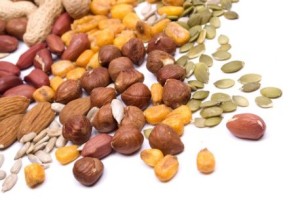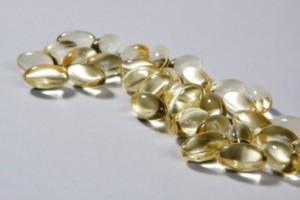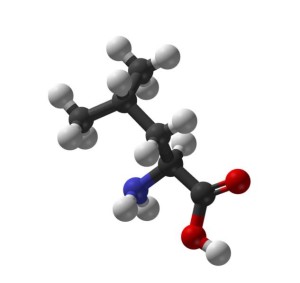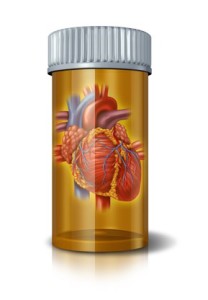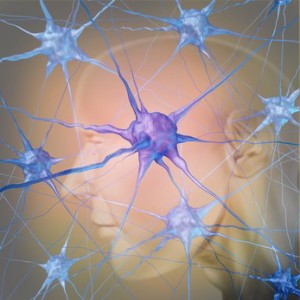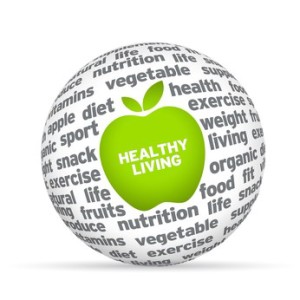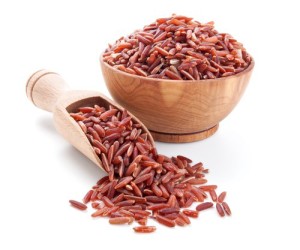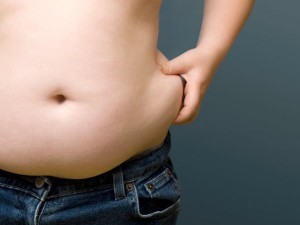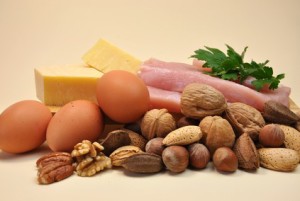Author: Dr. Stephen Chaney
 I came across an article the other day suggesting that one of the magnesium supplements benefits might be improved blood sugar control in pre-diabetics with low blood levels of magnesium (Guerrero-Romero et al, Diabetes & Metabolism, 41: 202-207, 2015). Considering that…
I came across an article the other day suggesting that one of the magnesium supplements benefits might be improved blood sugar control in pre-diabetics with low blood levels of magnesium (Guerrero-Romero et al, Diabetes & Metabolism, 41: 202-207, 2015). Considering that…
- A 2014 CDC report stated that 1/3 of adult Americans are pre-diabetic, and…
- Most people with pre-diabetes will go on to develop type 2 diabetes in 10 years or less, and…
- Diabetes is the 7th leading cause of death in this country, and…
- 60% of Americans don’t get enough magnesium in their diets…
…this could be a really big deal! Because of this I scrutinized the paper very carefully and reviewed the literature on magnesium intake and the incidence of type 2 diabetes.
Do Magnesium Supplements Improve Blood Sugar Control?
This was a relatively small study (116 adults, age 30-65), but it was well designed. All of the subjects had mild impairments in blood sugar control (i.e. were pre-diabetic), and all of them had low blood magnesium levels (≤1.8 mg/dL). This is a significant improvement over most previous studies of magnesium supplementation and blood sugar control because blood magnesium levels were not determined in many of those studies.
 The study was double-blind, placebo controlled.Subjects received either 382 mg of magnesium or a placebo each day for 16 weeks, at which time blood sugar control and blood magnesium levels were re-measured. All subjects were put on a weight maintenance diet consisting of 55% healthy carbohydrates, 25% healthy fats, and 20% healthy proteins and told to exercise for at least 30 minutes three times per week.
The study was double-blind, placebo controlled.Subjects received either 382 mg of magnesium or a placebo each day for 16 weeks, at which time blood sugar control and blood magnesium levels were re-measured. All subjects were put on a weight maintenance diet consisting of 55% healthy carbohydrates, 25% healthy fats, and 20% healthy proteins and told to exercise for at least 30 minutes three times per week.
Adherence to the diet and exercise regimen was 91% in both the supplement and placebo groups. Adherence to magnesium supplementation was 85% as measured by an increase in blood magnesium levels.
At the end of 16 weeks:
- Improvement in blood sugar control was observed in 50% of the people in the magnesium group compared to 7% in the placebo group. This was significantly different.
- Triglyceride levels were significantly decreased while HDL and blood magnesium levels were significantly increased in the magnesium group compared to the placebo group.
- Side effects of magnesium supplementation were mild abdominal pain (7.6%) and diarrhea (6.0%).
The authors concluded:
- “Our present results demonstrate the efficacy and safety of magnesium supplementation in the reduction of plasma glucose levels and in the improvement of glycemic status [blood sugar control] of pre-diabetic individuals who have low serum magnesium levels.”
- “Our results support the hypothesis that, as a complement to lifestyle intervention programs, people with pre-diabetes and low blood levels of magnesium also should take magnesium supplements to decrease plasma glucose levels and potentially decrease the transition rate from pre-diabetes to diabetes.”
Magnesium and Blood Sugar Control
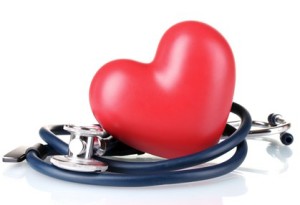 While the results of the recent study were impressive, it was a single, relatively small study, so I did a thorough review of the literature to put this study in perspective. This is what I found:
While the results of the recent study were impressive, it was a single, relatively small study, so I did a thorough review of the literature to put this study in perspective. This is what I found:
- A major study that followed 2,582 participants enrolled in the Framingham Heart Study for 7 years (Hruby et al., Diabetes Care, 37: 419-427, 2014) concluded that those who consumed the most magnesium (400 mg/day) had a 50% reduction in the risk of developing type 2 diabetes compared to those who consumed the least (240 mg/day).
Several other studies comparing magnesium intake to diabetes risk have come to similar conclusions.
- A meta-analysis of 13 studies with 536,318 people (Dong et al, Diabetes Care, 34: 2116-2122, 2011) concluded that the risk of diabetes was decreased by 14% for every 100 mg of magnesium consumed.
- Most, but not all, intervention studies like the one described above have shown that magnesium supplementation reduced blood glucose levels and improved blood sugar control.
However, most of these studies did not measure blood magnesium levels. This is a significant drawback because if the majority of subjects in a particular study had adequate blood magnesium levels at the beginning of the study, one would not expect additional magnesium to improve blood sugar control.
- A study of 4257 participants in the 1999-2000 National Health and Nutrition Examination Survey (Ford &Mokdad, Journal of Nutrition, 133: 2879-2882, 2003) concluded that around 60% of the adult US population was getting sub-optimal levels of magnesium from their diet.
The RDAs for magnesium range from 310-420 mg/day depending on age and gender, while intakes of magnesium ranged from 144-326 mg/day depending on age, gender and ethnicity. Those taking supplements had significantly greater magnesium intake than non-supplement users.
However, dietary recall studies almost always overestimate the percentage of the population that is deficient in any particular nutrient. Blood nutrient levels are usually considered a better indicator of nutrient deficiency, and some experts estimate that 20-30% of the US population may have blood levels of magnesium that are less than optimal.
Unfortunately, in the case of magnesium it is unclear whether even blood levels are an adequate indicator of nutrient status. That’s because only 1% of your body’s magnesium is found in the blood. The rest is locked up in your tissues where it is much more difficult to determine whether your magnesium status is adequate or not.
The Bottom Line
- A recent study showed that magnesium supplementation improves blood sugar control in pre-diabetics with low blood magnesium levels. The authors concluded that magnesium supplementation along with lifestyle change may be effective in slowing the progression from pre-diabetes to type 2 diabetes.
- This study is consistent with a number of previous studies suggesting that increased magnesium intake is associated with decreased risk of developing type 2 diabetes.
- This study is also consistent with the principle that supplementation works best in situations where there is a demonstrated need for a particular nutrient, in this case magnesium (the study participants were selected in part on the basis of low blood levels of magnesium).
- Other studies have shown that around 60% of the population is getting inadequate magnesium from their diet.Dietary recall studies probably overestimate the percentage of the population that is magnesium deficient, but most experts agree that a significant percentage of the US population likely have less than optimal magnesium status.
- You probably don’t need mega-doses of magnesium to support good blood sugar control. The clinical study described above used 382 mg/day of magnesium, but most dietary recall studies suggest that dietary intake of magnesium in this country is only 100-200 mg/day below RDA recommendations.
- Assuring an adequate intake of magnesium is only one component of a holistic approach for reducing the risk of developing type 2 diabetes. Other important components are weight control, exercise, and a healthy diet that restricts sugars and starches.
- Good dietary sources of magnesium include leafy green vegetables (5-6 servings = RDA), nuts (5-6 servings = RDA), orwhole wheat bread or brown rice (8-9 servings = RDA).
- Supplementation with ≥300 mg of magnesium can cause gas, bloating and diarrhea in sensitive individuals. If you are supplementing with magnesium, I recommend a sustained release supplement.
These statements have not been evaluated by the Food and Drug Administration. This information is not intended to diagnose, treat, cure or prevent any disease.






